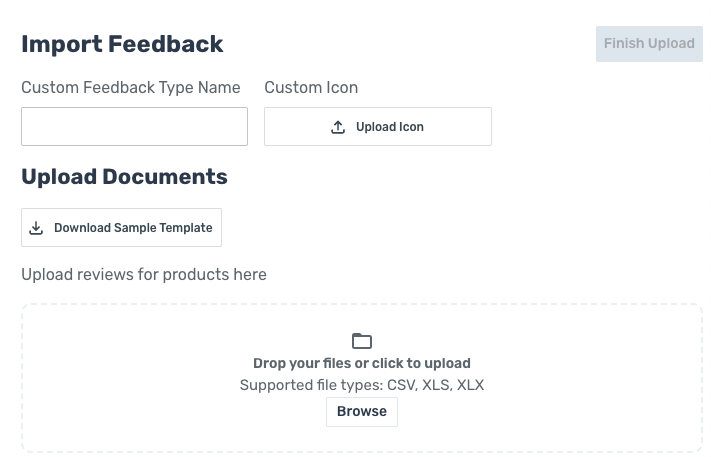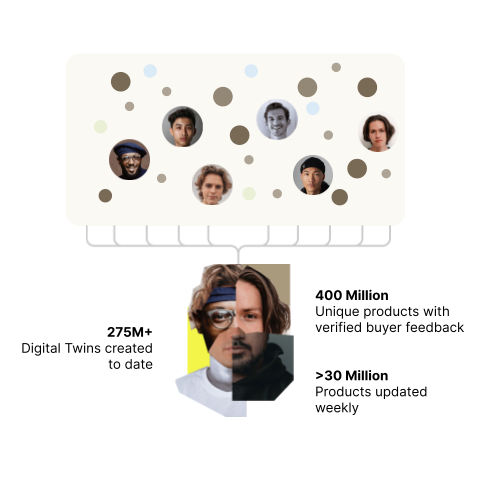Generative AI business use cases are transforming numerous industries across the world, enabling brands to make better decisions and achieve greater success. In today's competitive marketplace, brand managers, insights managers, and customer success managers should embrace generative AI applications like market benchmarking and product innovation to gain a competitive edge and achieve better results.
One real-world example of a brand using generative AI to gain a competitive edge is Nestlé’s use of generative AI models in their product development. By leveraging generative AI technology, Nestlé was able to create a new range of coffee flavors based on consumer preferences. This AI-based approach allowed Nestlé to better understand what products would resonate most with their audience, leading to increased sales and customer loyalty.
Another example of a company leveraging generative AI successfully is Synthego, a biotech start-up based in California. Synthego uses generative AI to optimize the design of genetic experiments, specifically CRISPR-based gene editing. CRISPR-based gene editing is a powerful tool in biotech research, but designing the right guide RNA molecules for gene editing experiments can be time-consuming and difficult.
Synthego's generative AI algorithms analyze genetic data and experiment results to suggest the best guide RNA sequences for a given gene editing experiment. By leveraging generative AI, Synthego has been able to develop a unique and valuable service for biotech researchers, which is not commonly available in the industry.
The generative AI market map and generative AI courses (which include tips for generative AI startups and generative AI videos) can be excellent resources to help businesses explore the benefits of this technology and incorporate generative AI in marketing strategies.
What Is Generative AI?
One of the simplest and most important questions that needs to be addressed up front is: what is generative AI? Generative AI refers to a type of artificial intelligence (AI) that involves the production of new data, images, sounds, and/or text from an existing set of data. Some examples of generative AI include music or image creation, video game design, and even the development of new medicines. Generative AI companies like OpenAI, Google, and NVIDIA have been making significant contributions to the field of generative AI, and their research has resulted in game-changing developments, such as GPT-3, a language processing AI that can generate human-like text.
How Does Generative AI Work?
Now that we’ve defined generative AI, we can follow up with a second question: how does generative AI work? Generative AI works by using algorithms, deep learning, neural networks, or machine learning to learn from the patterns and trends that are present in the input data. Based on these patterns, the AI system creates new output data, which can be further refined through additional learning and feedback. Generative AI technology is advancing at a rapid pace and is poised to revolutionize multiple industries, including entertainment, health, and education.
Generative AI Applications
Generative AI is becoming an increasingly popular solution for a wide variety of applications. For example, business is one area in which this technology promises to have a significant effect. Using generative AI, businesses can optimize products, enhance customer experience, and understand consumers more successfully and efficiently than ever before. One prominent example of generative AI, Sequoia, demonstrates how companies can achieve these benefits by creating synthetic data to train machine learning models.
Chatbots are another fascinating application of generative AI. ChatGPT, for instance, utilizes language models to create chatbots that can converse with clients efficiently. These chatbots can understand natural language and provide appropriate assistance, which can enhance customer support services in numerous ways.
In addition, generative AI is seeing use in various other areas such as content creation, image and video manipulation, and even art. For instance, generative AI art is creating ripples in the art world, and artists are experimenting with its potential to create unique art pieces.
Generative AI introduces numerous benefits for businesses as well, including the ability to create data without requiring any human intervention. It can also help brands create personalized content and experiences for customers much more efficiently. Furthermore, generative AI can accurately analyze data and provide insights that can help brands make informed decisions. Native AI is a great example of a generative AI company that is leveraging this cutting-edge technology to help brands glean more impactful insights from their data.
The generative AI market has witnessed significant growth in recent years, and it is expected to continue to grow exponentially. There are numerous generative AI projects and applications that are changing the way we understand and interact with technology. As a result, businesses must harness this technology's potential to optimize their products, improve customer experience, and gain a competitive edge
Benefits Of Generative AI
Generative AI has a wide range of benefits of which businesses can take advantage, from market insights to product innovation. With the help of generative AI tools, companies can analyze consumers' behavior, gain better insights into competitors, and even generate new products based on patterns and trends.
One of the advantages of generative AI is that it can uncover market insights through data analysis. AI algorithms can analyze consumer data, identify patterns, and surface insights that a human analyst may have missed. This allows businesses to understand their customers better, target their marketing strategies, and optimize product designs based on real-world consumer preferences.
Generative AI can also analyze market competitors, including their strengths and weaknesses, and identify opportunities for growth. This helps businesses make informed decisions about their competitors and stand out by creating innovative products that satisfy consumer needs to which competitors do not cater.
Additionally, generative AI can analyze trends and sentiment. By using AI technology to analyze trends, businesses can get ahead of the competition and become market trendsetters instead of followers. Additionally, sentiment analysis can help companies understand how consumers feel about particular products, branding strategies, or competitor products, which can inform overall marketing strategies.
Generative AI also has the potential to innovate new products based on images and information fed into the AI algorithm. OpenAI, a company dedicated to cutting-edge AI research, has developed GPT-3, a generative AI model that is capable of creating intelligent and articulate text, opening a world of creative possibilities. Similarly, generative AI has become a go-to tool for creating generative AI images or even designing other kinds of products like furniture.
There are numerous generative AI applications with high potential, including uncovering market insights, analyzing competitors and trends, and innovating new products. It is a powerful tool that can help businesses understand and target their customers better, create innovative products, and stimulate growth. As generative AI continues to advance, it will likely become even more valuable in delivering new creative possibilities and growth opportunities for businesses.
The Generative AI Wiki is a great resource for learning more about the benefits of generative AI and its potential applications. The Wiki is an extensive database that provides real-world generative AI examples demonstrating how businesses can leverage this technology.
Generative AI Future
Generative AI is set to revolutionize the way businesses function. With the advent of generative AI apps, many kinds of businesses across various industries are expected to automate and optimize their operations, leading to increased efficiency and productivity. Generative AI has already shown remarkable progress in a wide range of applications, such as natural language processing, computer vision, and even creative writing. As the field continues to advance, the future of generative AI looks incredibly promising, with even more impressive developments on the horizon.
One area in which generative AI ideas are likely to play a significant role in the future is the creation of highly realistic and immersive virtual environments. Generative models can already generate complex 3D models, and with further advancements in this area, we could see virtual worlds that are nearly indistinguishable from reality. This could have applications in fields such as gaming, architecture, and training simulations.
Another exciting area of development is in the creation of personalized content. Generative AI models can analyze vast amounts of data about an individual's preferences, interests, and behavior to create highly personalized content, such as music, art, or even advertising. As these models become more sophisticated, they may be able to generate entirely new creative works that are tailored specifically to an individual's tastes.
The generative AI market is projected to grow exponentially in the coming years, with funding for generative AI pouring in to help companies develop innovative new use cases. The future of generative AI appears likely to be one in which machines will be able to create and design without human intervention, leading to massive advancements in fields like art and music. As businesses scramble to incorporate generative AI into their strategies, we can expect to see a significant shift in the way society operates.
In general, the future of generative AI looks incredibly bright, with practically endless possibilities for new applications and advancements in the field. However, with these new capabilities come important ethical questions, and it will be crucial to ensure that these models are developed and used responsibly to avoid any negative consequences.




